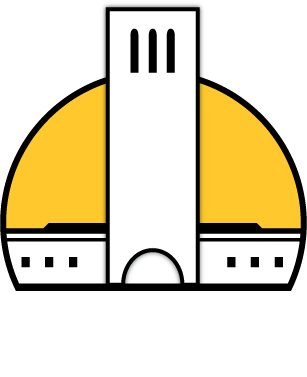On May 7, UC Santa Barbara Arts & Lectures hosted marine biologist, policy expert and author Ayana Elizabeth Johnson in Campbell Hall. Johnson was included in Arts & Lectures’ year-long Earth, Air, Fire, Water speaker series, highlighting notable voices in environmentalism and the earth sciences.
The event was moderated by Corley Kenna, head of communication and policy at Patagonia.
The conversation began with an account of Johnson’s first love: the ocean. The “Brooklyn native” described how, when she was 5, her parents took her to Key West, Florida because “they decided it was time for [her] to learn how to swim.”
“The moment that literally changed my life was going on a glass-bottom boat and seeing a coral reef for the first time,” she said. “That was basically the moment when I decided to become a marine biologist.”
This early experience and her “stubborn” fascination with underwater ecosystems also prompted her later shift from science to environmental policy.
“In that same spot where I learned to swim, the waters off the coast of Florida broke 101 degrees last summer. That is literally a hot tub,” she said.
Johnson explained that, not only is the ocean warming at alarming rates, but it’s also becoming much more acidic than many marine species are evolutionarily capable of handling. This is because the ocean has absorbed a significant amount of carbon dioxide emissions released by human activity, significantly changing the chemical composition of the ocean. In doing so, Johnson stated that the ocean “has really buffered the impacts of climate change.”
“The Earth would be unlivable for humans if it weren’t for that,” Johnson said. “So, first of all, thank you to the ocean for saving us from ourselves. But there’s only so much it can do.”
Despite having a career that requires her to digest disconcerting information on a daily basis, Johnson prefers to focus on all the possibilities for a better future. Her newest book “What if We Get it Right? Visions of Climate Futures,” will be released on Sept. 17. A multiformat anthology, the book explores what humanity’s future would look like if we employed all the solutions that we have at our fingertips.
She began by polling the audience through a show of hands: “How many of you have seen a movie or TV show that really focuses on climate solutions?” She received few responses. She then asked, “How many of you have seen a movie or TV show focused on climate problems and apocalypse and how it’s all going to hell?” and a far greater number of audience hands went up.
“So where do we go from there?” she asked. “Believe me when I tell you there are so many solutions and there are so many incredible people out there making the change … and if we’re not hearing those stories of success or, as I like to call it, possibility — there are infinite possible futures, and we each get to participate in shaping which one we’re going to have — and if we don’t have the literature, the media, the pop culture, if Hollywood doesn’t get its act together and help us see the future, it’s sort of maladaptive evolutionarily to sort of run toward a void.”
Referring back to her inspiration for the book, she said, “I thought that maybe I can help paint a little bit of a picture so that it doesn’t seem so scary to charge ahead.”
She described the creative process she underwent in compiling this new and novel addition to the climate cannon. She admitted that, initially, she struggled to answer the namesake question herself.
“I had a book deal, and I just sat on it for two years because who the hell am I to answer this question?” Johnson said. “It’s the biggest question I could think of and I thought it made a catchy title, but how could I do it justice?”
Eventually, she stopped trying to answer the question and instead began asking the question, which is her “preferred seat to be in.” Prior to drafting, Johnson sought to gain a more comprehensive understanding of what a future full of climate solutions could look like by moderating discussions between people with diverging perspectives. She gave examples of conversations between fishermen and marine farmers, landscape architects and design justice pioneers or an author of the Green New Deal and a climate scientist.
“My editor was like, ‘This is the book. Help us figure out who we should be listening to and then help us figure out what the hell they’re saying,’” she said. “I realized the book could literally be transcribed interviews, essays by me, essays by my coauthors … some poetry and some original art because I feel like the only way to answer that question is with collective wisdom.”
Johnson explained why she chooses to emphasize the “we” in climate solutions, saying that it goes back to the values instilled in her as a child. Her parents only had one open-ended expectation of her: “the one thing that they told me I needed to do when I grew up was to give back.”
Johnson also discussed the question she gets most frequently as a prominent climate advocate: “What can I be doing to help?” And to this question, she had two answers.
First of all, she highlighted the importance of voting, particularly in this upcoming election year and especially in local elections, where “the rubber hits the road on implementing climate policy.”
Additionally, she said, “When I think about what people can do, my first question is ‘I don’t know, what are you good at?’ Maybe do that in service of advancing climate solutions.”
In assisting people on how they can answer this question, she referenced the three-circle Venn diagram framework that she offers in her “How to Find Joy in Climate Action” TedTalk.
“The first [circle] is ‘what are you good at?’ What are your skills, resources and networks? What do you bring to the table? And think about that very generously, we all have a lot to offer.”
“The second circle is ‘what is the work that needs doing?’ What are the climate and justice solutions that you want to focus on? Because there are literally hundreds of things … and we can’t do them all so pick one, pick two, pick a few.”
“And the third [circle] is ‘what brings you joy?’ What gets you out of bed in the morning? … What brings you satisfaction? Or what’s gratifying? Or what’s rewarding enough that you keep going?”
At the intersection of these three questions, Johnson believes that everybody can find their specific contribution to the solutions that we need.
“I personally love this framework because it really is a chance for each of us to leverage our superpowers, and that’s really what we need.”















US Dollar 2,000 in a Single Online Day Due to its position, the United States offers a cb02 plethora of opportunities for those seeking employment. With so many options accessible, it might be difficult to know where to start. You may choose the ideal online housekeeping strategy with the vs-74 help of this post.
Begin here>>>>>>>>>>>>>> https://becomeriches01.blogspot.com/